Pan, the god of the wild and patron of shepherds, is famously associated with the origin of the pan flute, also known as panpipes or Syrinx. This instrument consists of multiple pipes of increasing length, typically crafted from reeds, giant cane, bamboo, or other materials like wood, plastic, metal, or ivory. The Romans equated Pan with the Italian deity Faunus.
According to myth, the story begins when Pan, half-goat and half-man, fell in love with a nymph named Syrinx. One day, while frolicking through the forests of Arcadia, Pan saw the beautiful Syrinx, daughter of the River God Ladon, and was instantly captivated by her.
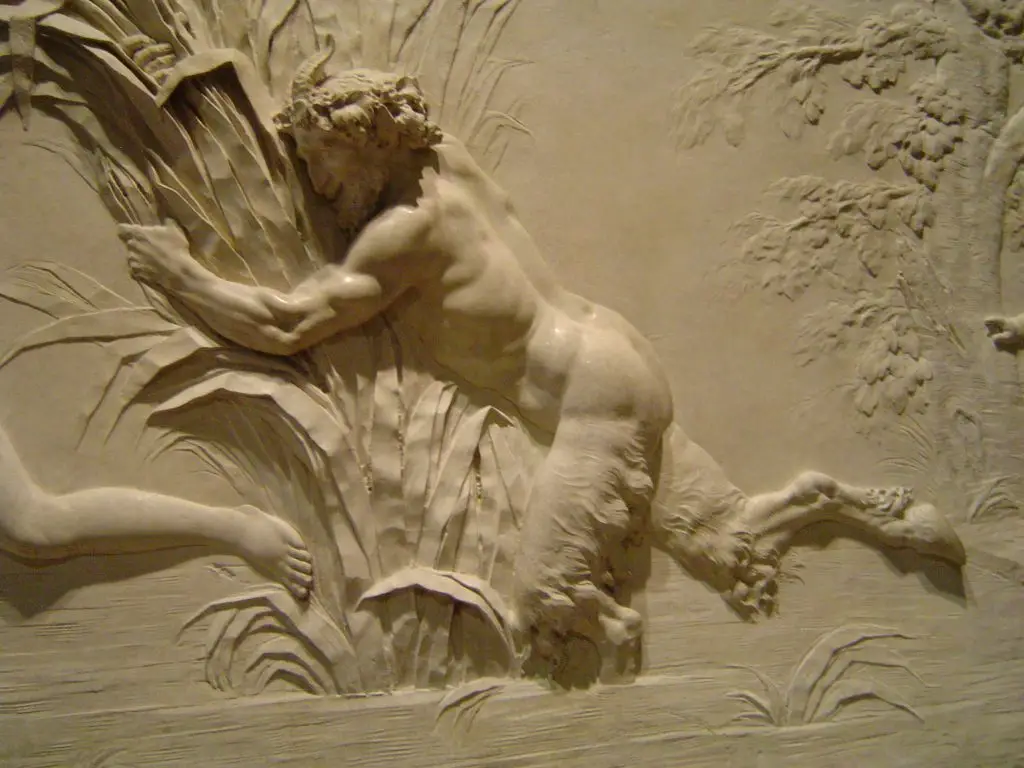
Determined to possess her, Pan began his pursuit. Syrinx, accustomed to unwanted attention from both gods and men due to her stunning beauty, was a skilled huntress who could move swiftly through the forest and endure long runs. She had always managed to evade her pursuers, but this time was different. Unlike other men, Pan could run tirelessly through the forests and mountains. He chased Syrinx for days through the hills, valleys, and woods of Arcadia. Exhausted and desperate, Syrinx ran to the river and begged her father, Ladon, for help. Just as Pan was about to seize her, she was transformed into wild marsh reeds.
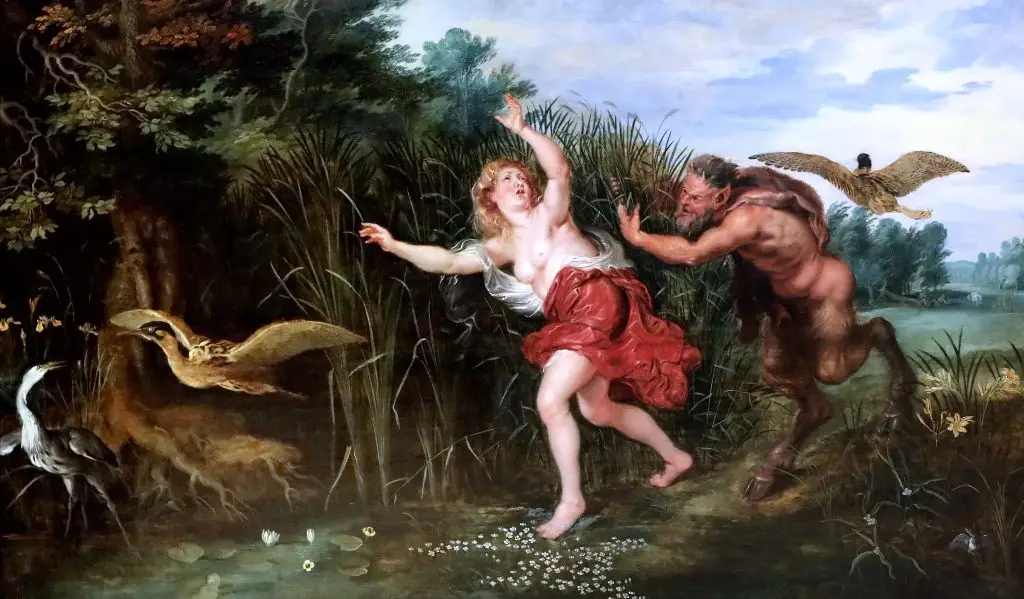
Ovid included the story of Pan and Syrinx in Book One of the Metamorphoses.
Pan’s story in the flute repertoire
The legend inspired some of the greatest composers to write incredibly beautiful music and flute solos.
Prelude to the Afternoon of a Faun by Claude Debussy
In 1894, Claude Debussy composed the exquisite symphonic poem “Prélude à l’après-midi d’un faune” (Prelude to the Afternoon of a Faun), inspired by the poem of the same name by the renowned French poet Stéphane Mallarmé.
During its premiere in Paris, the haunting flute solo was performed by Georges Barrère. Gustave Doret, the conductor for the premiere, reflected on the event in his memoirs, “Temps et contretemps,” written in 1942:
There was a vast silence in the hall as I ascended to the podium and our splendid flutist, Barrère, unfolded his opening line. All at once I felt behind me, as some conductors can, an audience that was totally spellbound. It was a complete triumph, and I had no hesitation in breaking the rule forbidding encores.”
Composer and conductor Pierre Boulez even declared that
“the flute of the faun brought new breath to the art of music.”
There are many available arrangements for flutists who would like to perform the solo at concerts.
Syrinx by Claude Debussy
In 1913, Claude Debussy composed “Syrinx,” a solo flute piece that poignantly conveys Pan’s sorrow after losing his beloved. This work quickly gained immense popularity and has since become an essential part of every flutist’s repertoire.
La Flûte De Pan, op.15 by J.Mouquet
Another notable composition is Jules Mouquet’s Sonata “La Flûte De Pan,” Op. 15, written in 1904 for flute and piano. This sonata, which includes movements such as “Pan et les Bergers,” “Pan et les Oiseaux,” and “Pan et les Nymphes,” also exists in a version for flute and orchestra. Mouquet dedicated the piece to the French flutist and educator Léopold Jean Baptiste Lafleurance, a disciple of Paul Taffanel. Mouquet himself served as a professor of harmony and composition at the Conservatoire de Paris during the early 1900s.
Bourdin, Chanson De Pan, Flute Solo Piece (1968)
Roger Bourdin (1923-1976), a distinguished French flutist, composed the solo flute piece “Chanson De Pan” in 1968. Bourdin served as a professor at the Versailles Conservatory and co-founded a flute quartet in 1945 with Pol Mule, Jean-Pierre Rampal, and Eugène Masson. Throughout his career, Bourdin achieved great success as a performer, teacher, and conductor.
Daphnis
In Greek mythology, Daphnis was a Sicilian shepherd, the son of Hermes and a nymph. He is credited with creating the genre of pastoral poetry and was taught by Pan to play the shepherd’s flute. In later legends, he was named as a teacher of Marsyas.
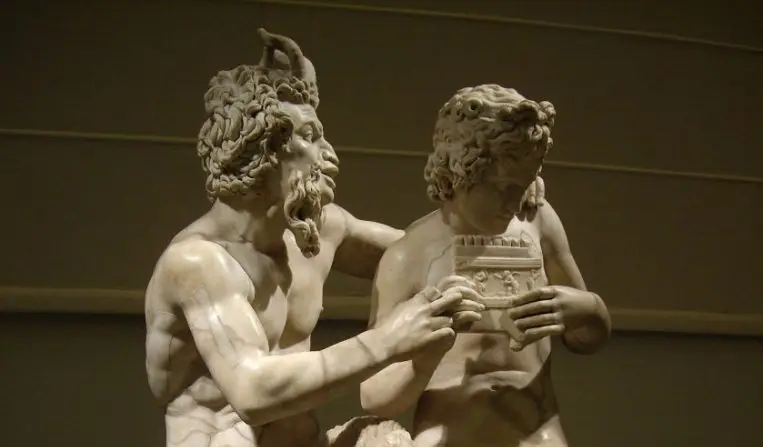
In the second century A.D., Greek novelist Longus wrote “Daphnis and Chloe,” a story about a boy and a girl abandoned at birth and raised by shepherds. They fall in love at a young age but are soon kidnapped and separated. After various adventures, they are eventually reunited.
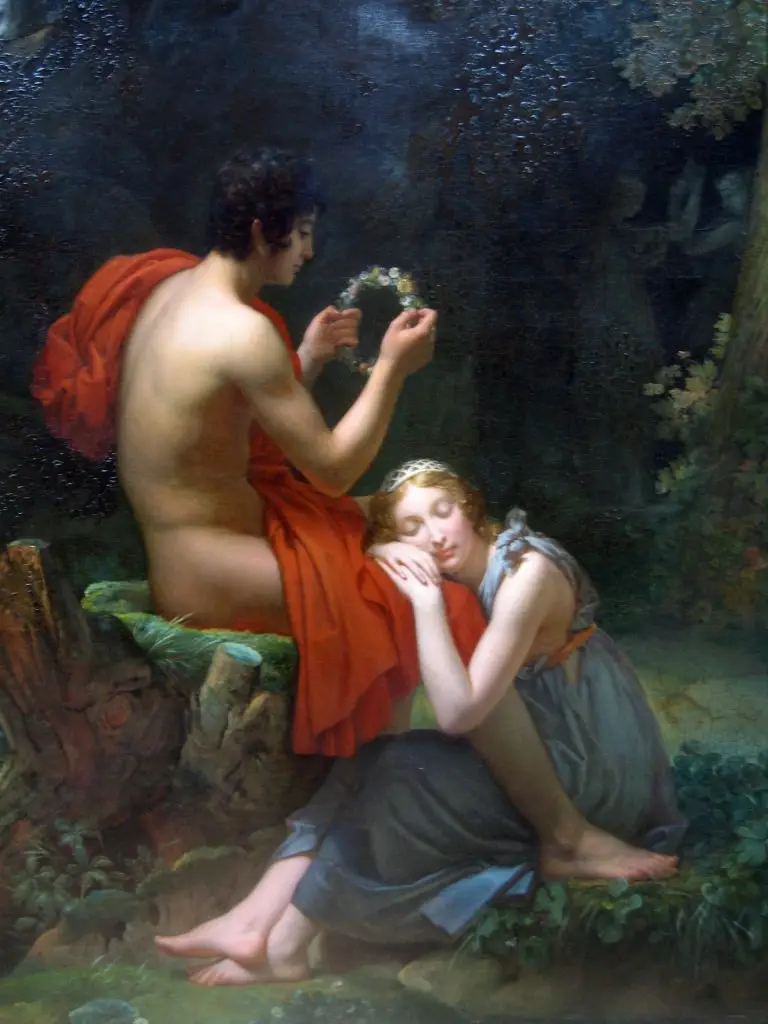
Maurice Ravel’s ballet “Daphnis et Chloé” (1912) references the story of Pan and Syrinx. Pan is depicted through a flute solo as he rescues Chloé from pirates. At a banquet held in his honor, he plays a passionate and tender melody, remembering Syrinx, while Chloé dances. This flute solo has become one of the most significant solos in the orchestral flute repertoire and is often included in audition requirements.

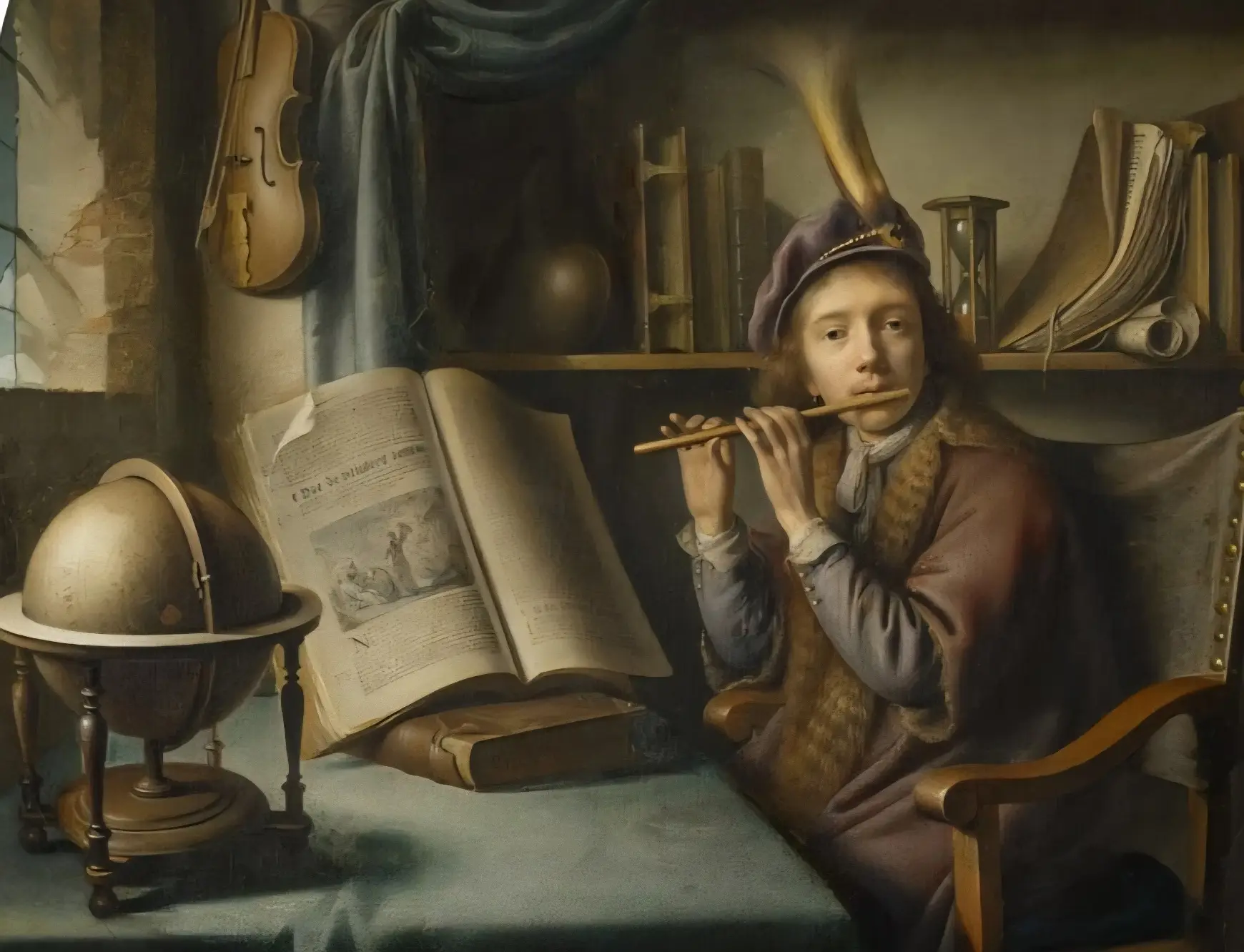



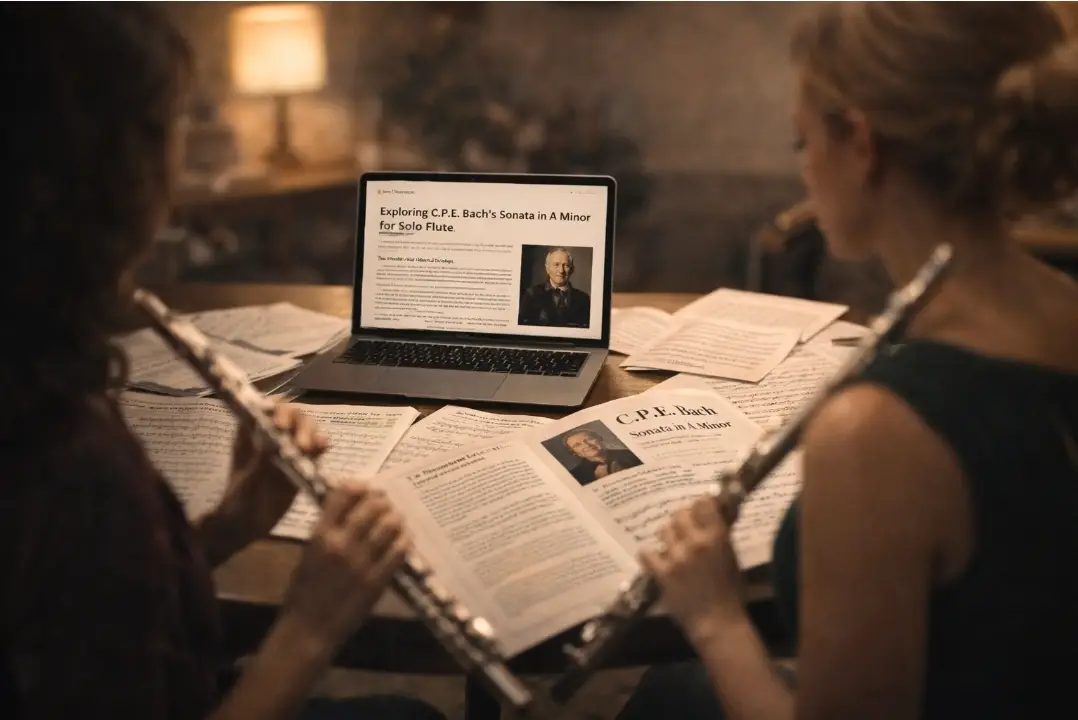
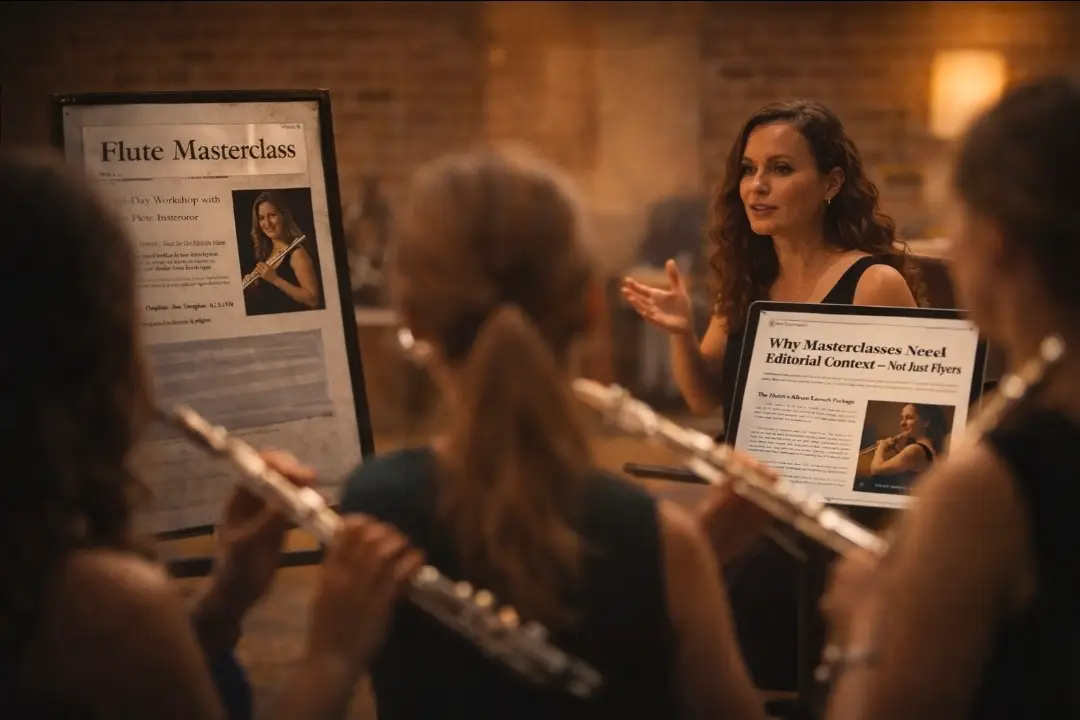


Syrinx by Debussy , or let’s give the correct title la Flûte de Pan, as the publisher Jobert changed the original title is not strictly just a Flute solo but incidental music to the play Psyche by Gabriel Mourey and in its original form performed with narration ( there are numerous excellent recordings of this). In this form the piece is also not continuous as it is in the Syrinx format.
Syrinx or correct title La Flûte de Pan is not originally a Flûte solo but incidental music to the 3rd Act of Gabriel Mourey’s play Psyche and also contains narration. There are some excellent recordings of it thus. In this form the performance style also changes and is not continuous. Joubert the publisher changed the title to make it a Flute solo.